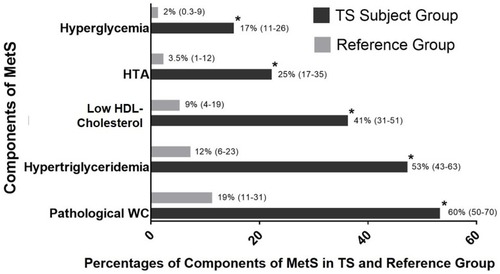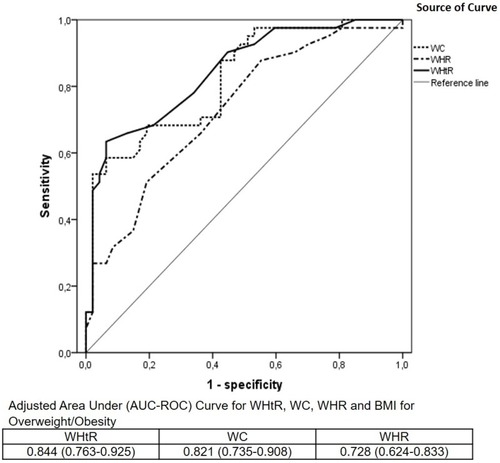Figures & data
Table 1 Description of the study population
Table 2 Comparison between Turner syndrome subjects with and without metabolic syndrome
Figure 1 Prevalence of the single components of MetS for TS subject and reference groups.
Abbreviations: HTA, Arterial Hypertension; Pathological WC, Waist Circumference ≥80 cm.

Table 3 Comparison between Turner syndrome subjects with and without overweight/obesity
Table 4 Sensitivity, specificity and cut-off points for anthropometric variables predictive of MetS and overweight/obesity in adult TS subjects


